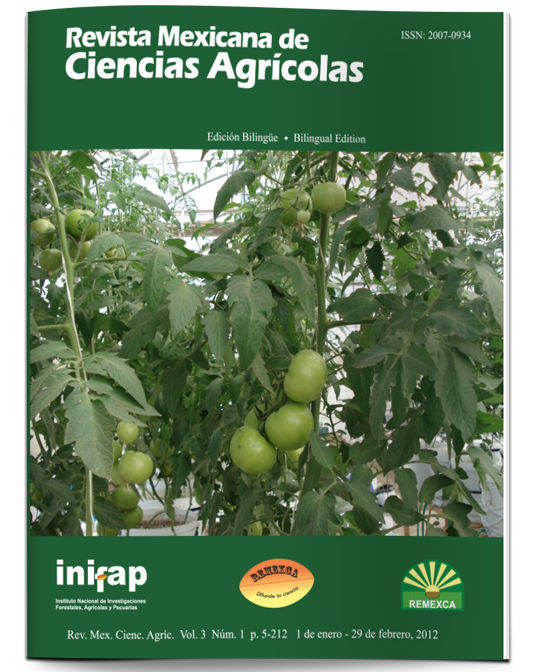G*E interaction of 135 recombinant inbred lines of sorghum for biofuel production
DOI:
https://doi.org/10.29312/remexca.v3i1.1478Keywords:
Sorghum bicolor L. Moench, environments, sugar content, genotype, outstandingAbstract
Sorghum (Sorghum bicolor (L) Moench) is one of the main basic foods for the poorest people in the world, suffering from a situation of increased food insecurity. This crop is adapted to a warmer and drier agro-ecological environment, where it ́s difficult to grow other cereals. The formation of outstanding genotypes requires to evaluating the genetic materials in different environments and determines their genotype- environment interaction. The objective was to detect and analyze the genotype-environment of a group of recombinant inbred lines and select the highest potential to be used in the production of biofuels. 135 recombinant inbred lines of sorghum were evaluated at different locations during the years 2006, 2007 and 2008. Data from seven variables were analyzed as corresponding to an experiment in randomized block design in each of several environments. Genotype-environment interaction was analyzed using theAMMI model. It was highly significant, scoring the recombinant inbred lines, selecting them by its size and selecting those with less magnitude, the best environment for the proper development of recombinant inbred lines were determined and, 13 lines with higher sugar content were selected measured in °Bx.
Downloads
Downloads
Published
How to Cite
Issue
Section
License
The authors who publish in Revista Mexicana de Ciencias Agrícolas accept the following conditions:
In accordance with copyright laws, Revista Mexicana de Ciencias Agrícolas recognizes and respects the authors’ moral right and ownership of property rights which will be transferred to the journal for dissemination in open access. Invariably, all the authors have to sign a letter of transfer of property rights and of originality of the article to Instituto Nacional de Investigaciones Forestales, Agrícolas y Pecuarias (INIFAP) [National Institute of Forestry, Agricultural and Livestock Research]. The author(s) must pay a fee for the reception of articles before proceeding to editorial review.
All the texts published by Revista Mexicana de Ciencias Agrícolas —with no exception— are distributed under a Creative Commons License Attribution-NonCommercial 4.0 International (CC BY-NC 4.0), which allows third parties to use the publication as long as the work’s authorship and its first publication in this journal are mentioned.
The author(s) can enter into independent and additional contractual agreements for the nonexclusive distribution of the version of the article published in Revista Mexicana de Ciencias Agrícolas (for example include it into an institutional repository or publish it in a book) as long as it is clearly and explicitly indicated that the work was published for the first time in Revista Mexicana de Ciencias Agrícolas.
For all the above, the authors shall send the Letter-transfer of Property Rights for the first publication duly filled in and signed by the author(s). This form must be sent as a PDF file to: revista_atm@yahoo.com.mx; cienciasagricola@inifap.gob.mx; remexca2017@gmail.
This work is licensed under a Creative Commons Attribution-Noncommercial 4.0 International license.



